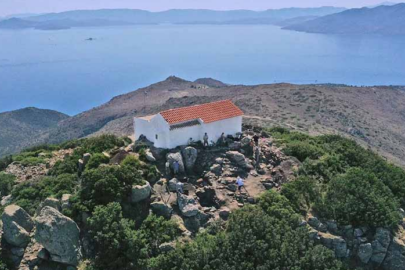Recent analyses by a National Technical University of Athens reconstruction team have confirmed ancient building activity at a cave believed to have been Jesus’ burial place, inside a shrine it worked on in the Church of the Holy Sepulchre in Jerusalem.
The shrine over what is believed to be the cave Christ was buried is called “the Edincule”, and was in danger of collapsing when the international team was assigned its reconstruction, which began in October 2016 and lasted a year.
As reported by the National Geographic magazine, the analyses of mortar samples taken from the cave by the international team confirmed that the earliest efforts to preserve the religious site dated to the 4th century AD and Emperor Constantine’s reign.
At the time, the emperor had sent a delegation to Jerusalem who was told, according to tradition, that Jesus’ tomb was located at the site of a Roman temple. The temple was leveled and excavations under it revealed a tomb in a natural rock formation containing a burial platform. The platform was covered by a marble slab that was placed there between the 14th and 16th centuries. Underneath this, the reconstruction team discovered an older slab that yielded mortar samples dating to 345 AD.
Samples by the team also revealed more phases of reconstruction at the Edicule, which had been built around the cave once an extending shelf on top was cut away. The shrine collapsed in 1009 and was reconstructed in the 11th century AD.
The National Technical University team leading the reconstruction now has “additional evidence for construction works from the Roman period, as well as a documented 16th-century restoration,” the National Geographic reported, with mortar samples from remains of the southern wall of the cave giving both an earlier date (335 AD) and a later one (1570) than previously known for building activity at the site.
In its article, the National Geographic article cited chief scientific supervisor Antonia Moropoulou and said the report on the scientific results would be published in a forthcoming Reports issue of the “Journal of Archaeological Science”. The National Geographic Channel will premiere the “Secrets of Christ’s Tomb” on Dec. 3, while a 3D exhibition is open at the organisation’s museum in Washington DC through the fall of 2018 (“Tomb of Christ: The Church of the Holy Sepulchre Experience”).
Source: mignatiou.com

































